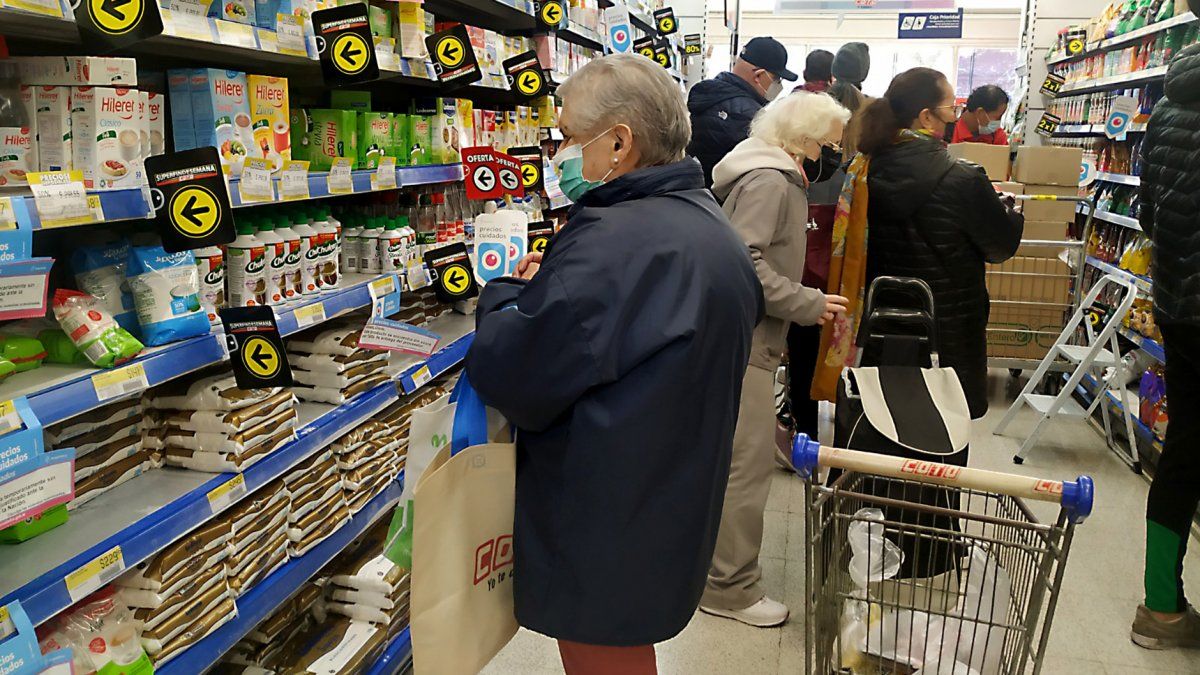Even the monthly measurement was higher than what the Minister of Economy, Sergio Massa, had predicted.who had said over the weekend in dialogue with Perfil that December inflation was going to be below 5%the same as what happened in November, when the CPI was 4.9%.
Six items were above the general measurement. In fact, two of them exceeded 7%: it is about Restaurants and hotels (+7.2%)followed by Alcoholic beverages and tobacco (+7.1%). They also rose strongly in December, Home equipment and maintenance (+5.9%)which was affected by the increase in domestic service, Transport (+5.8%) due to the rise in fuels, and Health (+5.7%) due to increases in prepaid medicine fees.
The rise of Food and non-alcoholic beverages (+4.7%) had the greatest impact in most regions but was below the overall measurement. The rise was due to “the increase in fruits, mineral waters, soft drinks and juices. Bread and cereals and, in some of the regions, vegetables, tubers and legumes.” At the same time, the Core CPI (+5.3%) led the monthly rise, followed by Regulated (+5.1%)where the increases in fuels and prepaid medicine quotas impacted, among others– and Seasonal (+4.6%).
Regarding the values for regionthe highest was for the GBA with the 5.3%then they found the area Pampeana (+5.1%), Cuyo (+5%), Northeast (+4.8%), Northwest (+4.7%), and Patagonia (+4.5%).
Regarding the monthly measurements during 2022, the highest was in July (+7.4%)followed by August (+7%)Y March (+6.7). In October it was 6.3%, in September 6.2%, and in April 6%. June was 5.3%, and 5.1% was repeated in December and May. The months with the lowest value were: November (+4.9%), February (+4.7%) and January (+3.9%).
What the analysts think
The Economist Gonzalo Semilla, head of CREEBBAin dialogue with Ámbito, maintained that “the slowdown in inflation in November (+4.9%) became encouraging news, especially when it reached the maximum level of the CPI last July with 7.4%” but that “anyway it was too early to confirm that the trend would continue along the same path, considering that December is characterized by being a month with seasonal ingredients, mainly the Leisure chapter (tourism, gastronomy, etc.) and Alcoholic beverages and tobacco (associated with summer weather). Both chapters are the ones that strongly influenced the final index”.
“With the price agreements with the food sector (Fair Prices), the advances for agreements with the construction and school supplies sectors (seasonal in February-March), among others, and the containment of the regulated category (services basically), all of them can become barriers to rising prices in the coming months. Although estimates range between 5.6% and 6% for the near futurethe ruling party expects them to be corrected downwards, reaching values between 4.5% and 5%,” Semilla expanded on what could come.
Ecolatina’s economist, Santiago Manoukiansaid that the December measurement “was in line with our expectations” and that “it marks a second month in a row (November was 4.9%) of clear moderation in the inflationary dynamics after that average of 7.2% we had between July and August and later September and October dropping to the area of 6%”.
“The year ends with inflation close to 95%, the highest since the end of hyperinflation. It should be remembered that in October 1991 it was 102%”he said and, regarding the causes that raised the measurement, he was of the opinion that it was due to two shock: “The war in Ukraine that generated greater pressure on energy and food prices and the departure of Martín Guzmán at the beginning of July that generated a lot of uncertainty with a rise in the exchange rate gap.”
Regarding what is coming, Manoukian mentioned: “The possible drought impact on the price of food, a boost awakening of beef that comes behind, the own salary dynamics, the pending utility rate adjustmentsY restrictions on imports; factors that will continue to put pressure on the price level. But the moderation of the crawling peg with the price agreement set recently closed will allow the becha to be kept contained”.
For his part, the economist Jorge Neyro He also agreed that “inflation in December was within the expected range” and regarding the acceleration compared to November, he maintained that it was due to the increases in regulated prices, such as prepaid, and seasonal prices, such as Hotels and Restaurants, which is “very active in the summer”.
“Food rose 4.7%, which is a little above what the Fair Prices program promotes”explained Neyro and remarked that regarding the prices of meat, “the great drought implied a great liquidation of cattle heads therefore the prices remained very stable but once the rain returns to normal and the process of rebuilding the livestock stock begins, the supply will be much lower and prices will tend to increase.” He stressed that for In the following months, increases in regulated prices are expected, driven by prepaid, transportation, and electricity and gas services.
Camilo Tiscornia, director C&T Economic Advisorsinformed, for its part, that “the data from the start-up of January show an acceleration in food and beverage prices along with a seasonal jump in items related to tourism, which anticipates another month without a drop in inflation”.
Juan Manuel Franco, Chief Economist of Grupo SBS, highlighted that “of the 12 months of 2022, inflation of less than 5% was registered in only 3, both at the general and core levels.” “Looking towards 2023, the high-frequency data pointed to an inflationary acceleration in the first week of January, although this is a usual phenomenon at the beginning of each month. In any case, the expansion of closing pesos of 2022 was important and it could imply that, once the favorable effects of seasonality in the demand for pesos have dissipated, inflation may accelerate from February onwards“.
Source: Ambito
David William is a talented author who has made a name for himself in the world of writing. He is a professional author who writes on a wide range of topics, from general interest to opinion news. David is currently working as a writer at 24 hours worlds where he brings his unique perspective and in-depth research to his articles, making them both informative and engaging.




